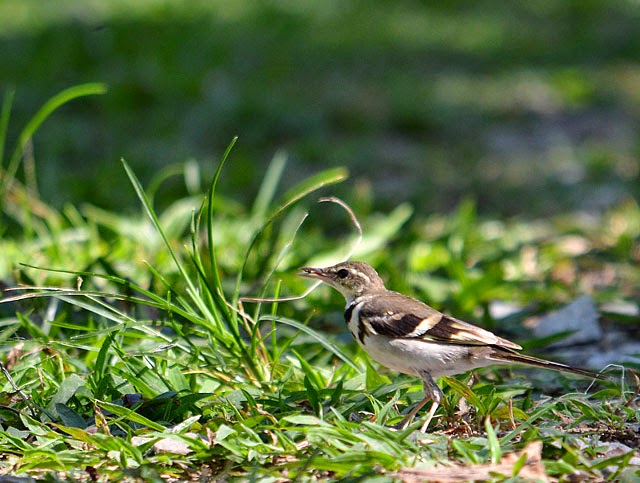It
is always good to see the young children developing a love and interest in
nature. My latest guest from Singapore forest of Air
Hitam Dalam in Penang . This
small area of birding delight is the best choice to suit their needs as they
are still relatively new to the world of birding.
As
soon as we got down from the car, we were greeted by the resident pair of
Mangrove Blue Flycatchers. It has been months since my last visit and I am
delighted to see that the world's friendliest Mangrove Blue Flycatchers are
still upholding the reputation they created for themselves.
Just
so that I will not doubt them again, the male bird put on a memorable
performance and it was one that left quite an impression on my guests. Heck,
sometimes I myself cannot believe how confiding these flycatchers have become.
The
other celebrity flycatcher of this locality, the Yellow-rumped Flycatcher, is
getting ready for the coming breeding season. He showed off his partial
breeding plumage and it will not be long now before he undertakes the journey
back north. Safe journey, bud. I hope to see
you back here again in winter.
A
few Abbott’s Babblers came surprisingly close to the elevated boardwalk as they
foraged for food. However, the lighting conditions and active nature of the
birds made photography rather challenging.
The
resident Olive-winged Bulbuls were in full chorus throughout most of the
morning. This individual was more confiding than usual. I guess the anticipation
of the breeding season does that to you sometimes.
Another
resident that looks set for the breeding season is the resident pair of Crested
Serpent-eagles. One of them was enjoying the morning sun on an exposed perch
and provided a prolonged and close encounter.
This
female Common Iora was also soaking up the rays of the morning sun from the
cover of the canopy. She looks rather content except for the occasional glance
to see what these humans were up to.
I
am a little disappointed with how this shot of the Greater Racket-tailed Drongo
turned out. It was a shame because the drongo was foraging so close and at eye
level. I even had to reduce my zoom in order to fit it into frame. I guess I
underestimated the influence of the dim lighting condition.
I
was a little surprise to see this Forest Wagtail foraging nearby the main access
road. Most of the time, I see it among the undergrowth of the swamp forest or
within the rear car park area. Despite being out in the open, the wagtail was
still a difficult subject for photography as it never stops moving.
The
bird of the trip was undoubtedly the Spotted Wood-owl. This was my guests’
first wild owl and needless to say, we all know how it felt. Mysterious and
beautiful, owls are truly fascinating creatures. It was a good experience for
them especially for little Lucas. This is my third posting in a row that ends
with owls wrapping things up but you will not hear me complaining.
















5 comments:
A top notch introduction to you neck of the woods Wai Mun. Well done!
Great - what an owl species for young Lucas to start with !
Thanks, guys! Yes, it was a good experience for them.
Lovely read. Have never visited the place. Nice introduction for a novice. Thanks.
Thanks, Obleng.
Post a Comment